Craig Green SS19 review: London’s finest takes to the world stage
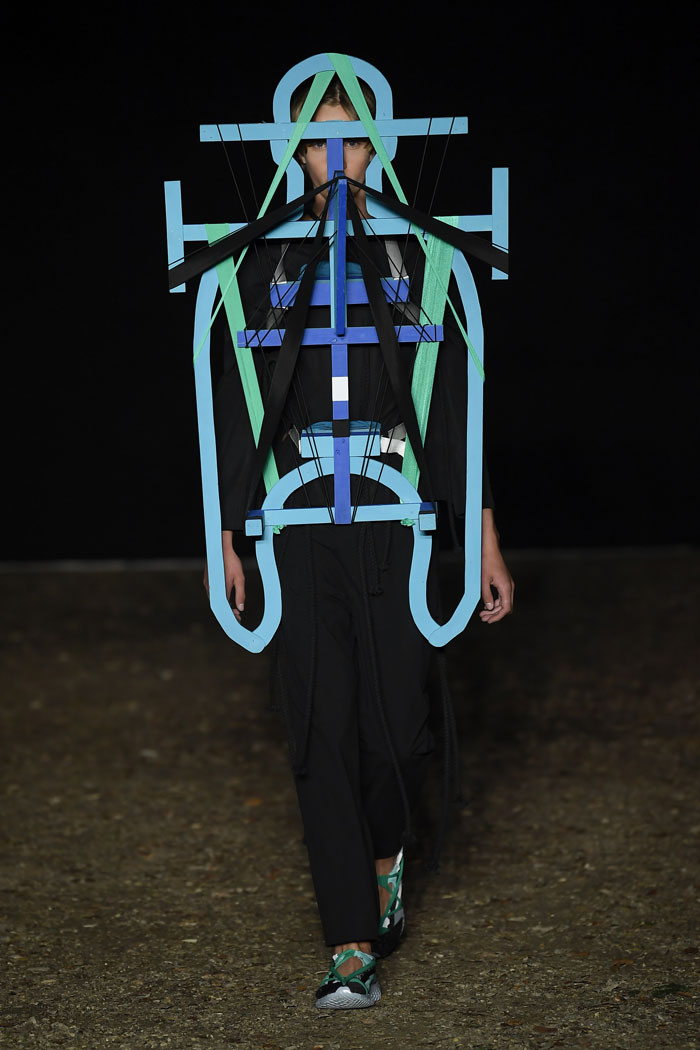
Simply sign up to the Life & Arts myFT Digest -- delivered directly to your inbox.
Craig Green put up his hand and grabbed a moth. It was gone 10pm, backstage after his majestic spring/summer 19 show at the Boboli garden in Florence, where Green is this season’s guest designer of the Pitti trade fair. Insects were flying into the spotlights. Green said when he was looking at the monitor backstage of the catwalk, all he could see was mosquitos, like a swarm about to attack the audience.
It was apt, because, as Green said, “I love horror. It was that idea that the scariest thing you can think about is reality,” he said. The link was most clear in human outline wooden structures worn by some models that punctuated the collection. They looked like halos, or also crime scene chalk marks. “That idea of an angel. It also looked like someone following you.”
The collection was a series of bangers, a flow of great ideas that sing from the rails of specialty retail. Simple white smock tops and wide pants were inspired by surgeons scrubs, with added sight lines of orange cord. Line-stitched cotton was dyed then acid washed to create an effect that Green said was “like static on a TV”. These also had fins of contrast colour lycra coming from the arms or joining the legs: “I thought it was nice that when they walked it looked like someone had cut them out on Photoshop and dragged them into the space.”
Vivid colour panel knits were in collaboration with Nike, which had provided them with its Flyknit fabric usually found on sneakers. At the end, a series of distorted image tabards were actually three layers of fabric — football shirt jersey, nylon organza and mesh — that were digitally printed and then each layer slightly moved. Green said these were like a portal into another world.
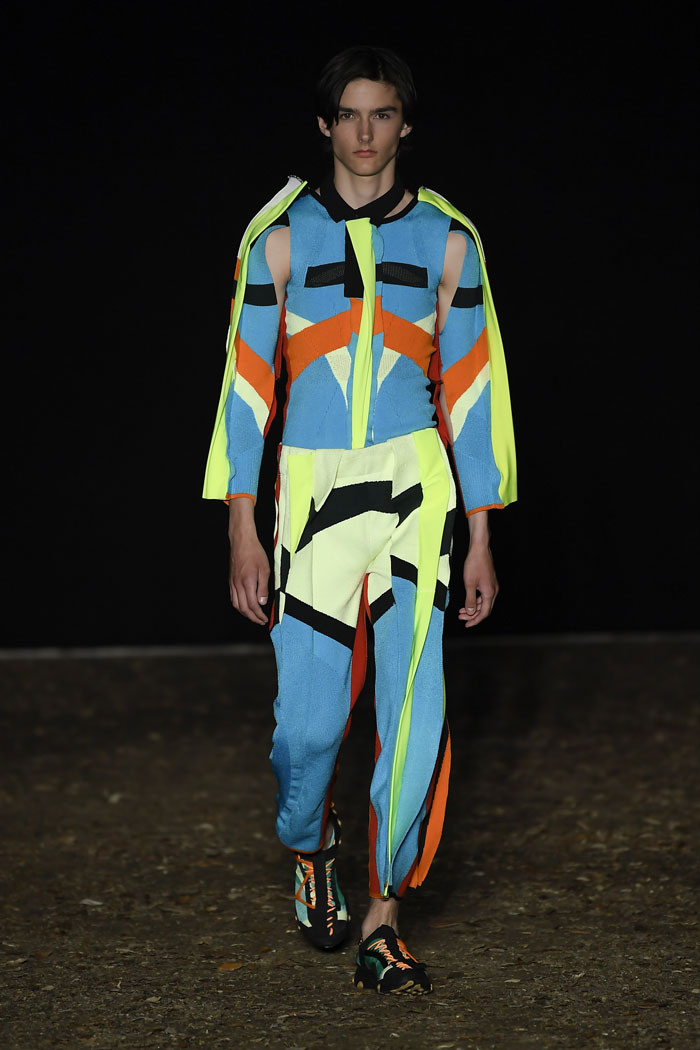
Such is the power of Green’s signature that all this free-range thinking can result in recognisable garments. The audience was studded with Craig Green super-fans wearing the same piece: a tropical beach zip-up patchwork jacket from his current SS18 collection. None of them seemed to care about the seeming faux-pas. There is pride in wearing Green’s designs.
What struck most was the combinations of strong colour, particularly the Flyknits. “I watched a documentary where someone was talking about how when you put two colours together, they make your emotions feel something else,” said Green. “I like that when you put red on top of blue it looks like it’s vibrating. The line, you can’t focus on it.”
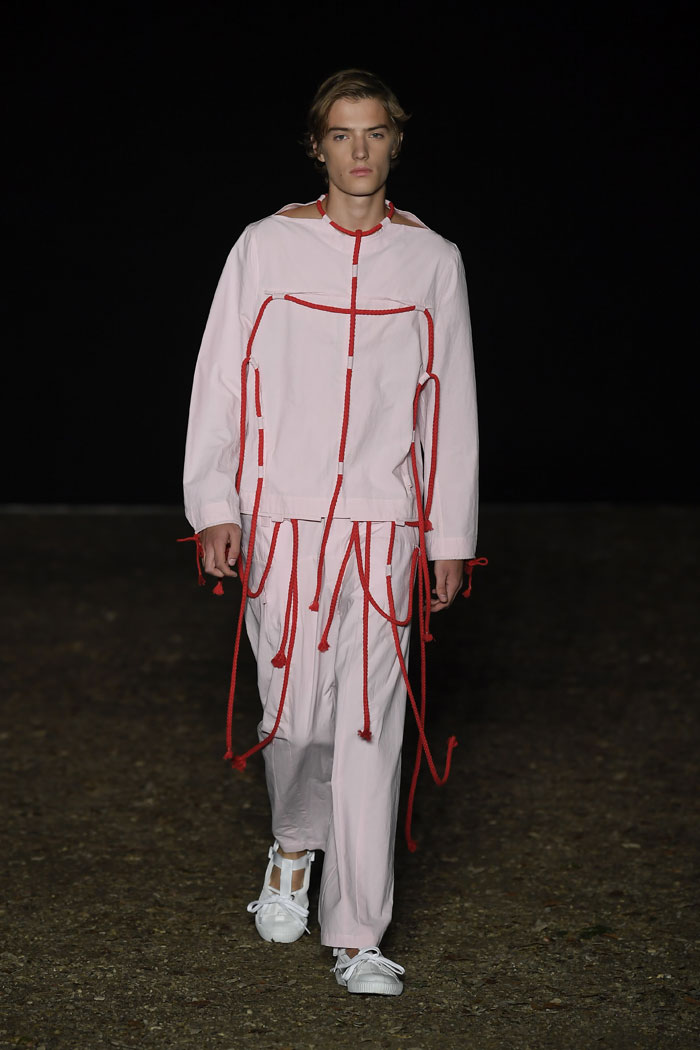
Notice how much Green is talking about the individual’s connection with the garment. This is not about how you look to others. There’s no talk of the codes your garments send out, about what your wardrobe conveys about your place in society. Instead, it is the effect of the clothes on the wearer themselves. This intimacy is a rare state in fashion, and maybe goes to explain the kinship that Green’s customers feel with his designs.
Green works in series of threes. This collection was the end of his current triptych. There are big decisions to be made. Should he return to the London catwalk? He said that showing in Florence had widened his audience, since only a limited number of stores attend London menswear. “There are buyers here who’ve bought the collection for four years but have never seen a show,” he said. But then Craig worn born in London, the city where he has now won British Menswear Designer of the Year twice in a row at the Fashion Awards. It was clear that he misses home.
This collection was a step upwards in its confidence, ideas, audacity. It might also prove to be a turning point in Green’s career. Whatever happens, there’ll be a legion of admirers, all happy to be in the same space, wearing the same thing.
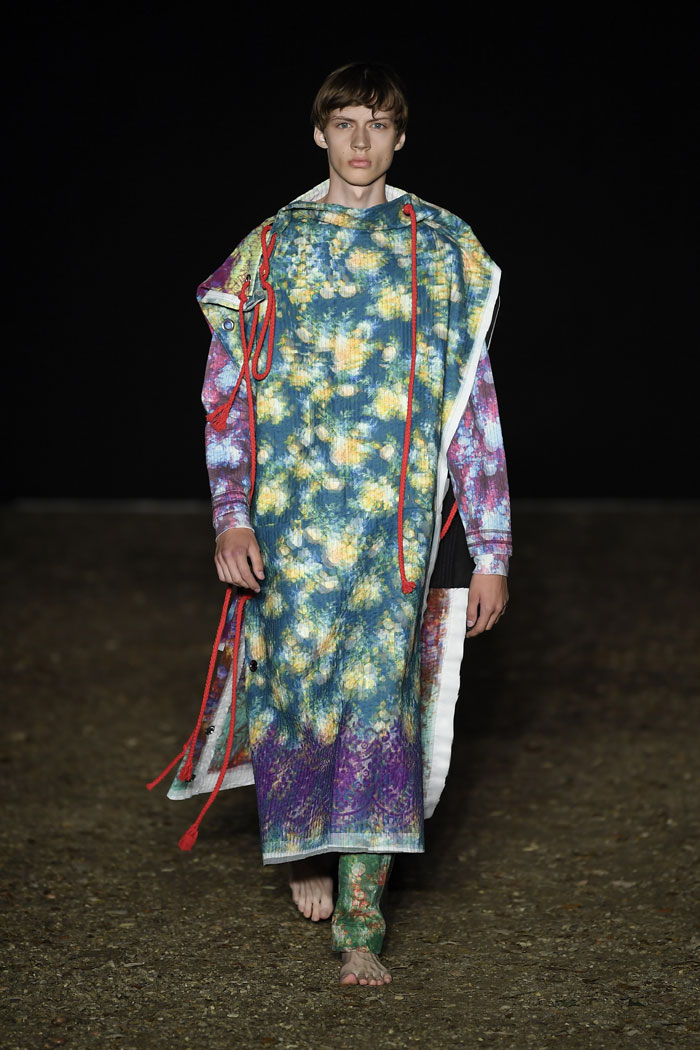
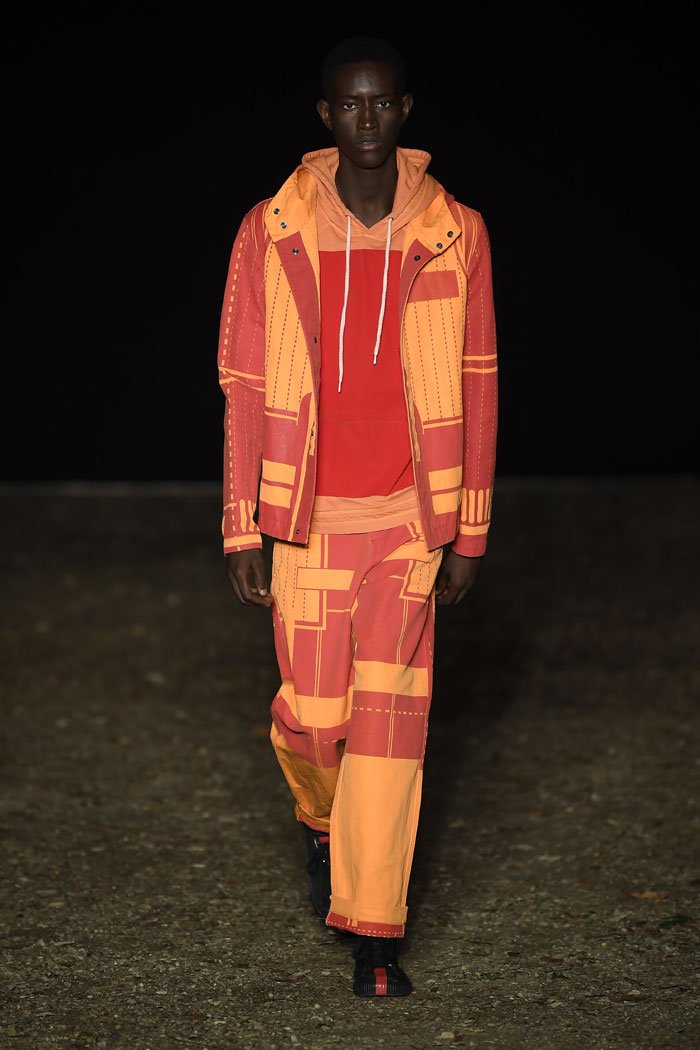
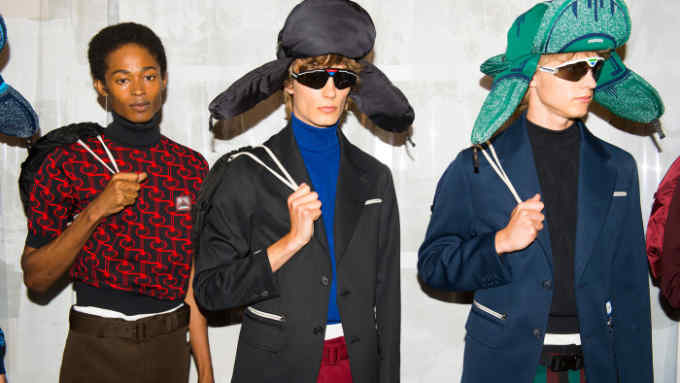
Comments